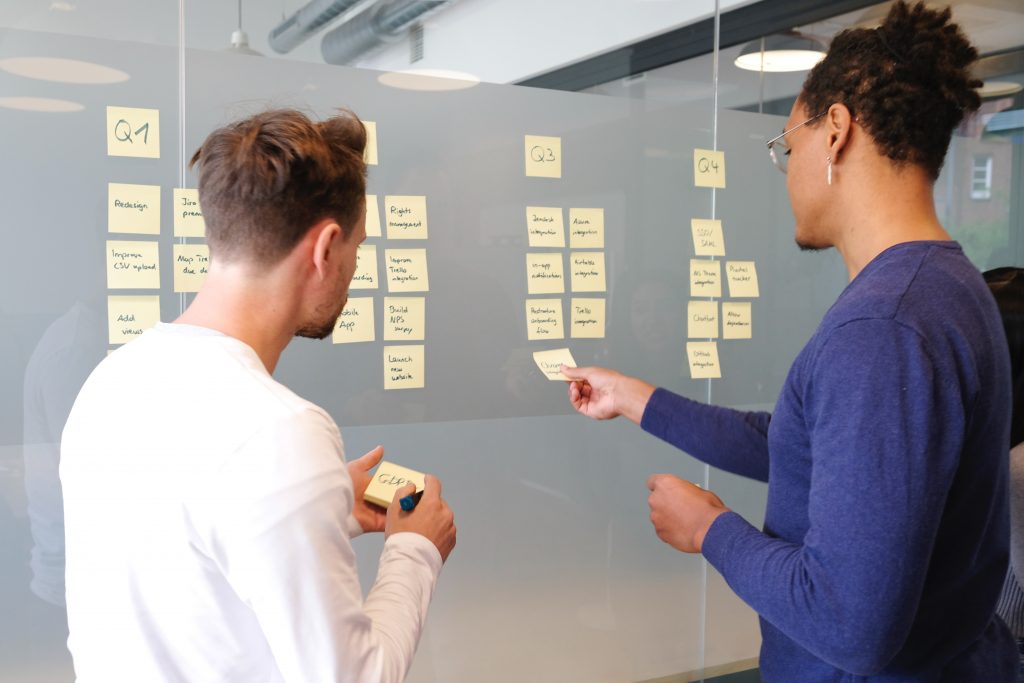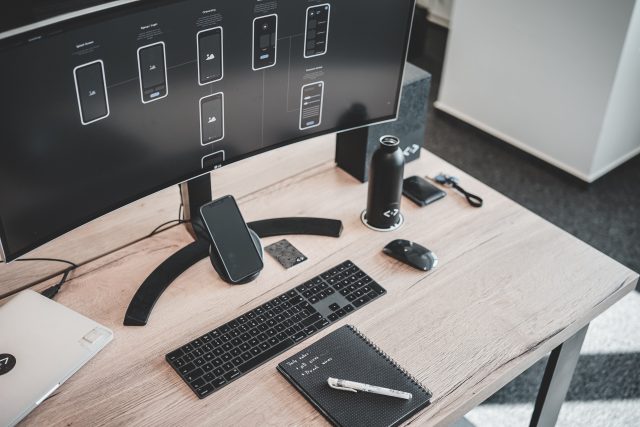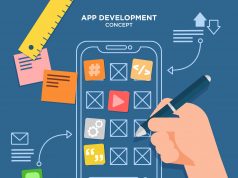Embark on a journey to remain at the forefront of UI/UX design trends in the USA. In this rapidly evolving field, staying updated is key to creating captivating and user-centric digital experiences. Explore effective strategies and resources that will empower you to navigate the dynamic world of design trends, ensuring your skills are finely tuned to meet the demands of today’s digital landscape. Whether it’s leveraging industry insights, networking with fellow professionals, or exploring new tools and techniques, this guide will equip you with the knowledge and tools needed to elevate your UI/UX design game and stay ahead in the competitive design industry.
Staying Current with the Latest UI/UX Design Trends in the USA
Here are some of the ideas to stay up to date on the Latest UI/UX Design
Attend Conferences and Workshops:
Attending webinars and conferences is a dynamic approach to staying current with the latest UI/UX design trends. These events provide a rich learning experience, offering insights, knowledge sharing, and networking opportunities that contribute significantly to a designer’s professional growth.
Webinars are online seminars where experts and thought leaders discuss relevant topics, share insights, and showcase best practices. These sessions offer the advantage of flexibility, allowing designers to participate from anywhere in the world. Conferences, on the other hand, are larger-scale events that bring together professionals from various industries. UI/UX design conferences often feature keynote speakers, workshops, and panel discussions that delve into emerging trends, case studies, and hands-on design techniques.Follow Industry Influencers:
Engaging with influential figures in the UI/UX design realm on social media platforms is a valuable strategy to remain current with the latest trends. These individuals, known for their expertise, regularly share insights, resources, and practical examples that contribute to your learning journey.
Influencers frequently distribute articles, videos, tutorials, and case studies, enriching your understanding of specific design concepts and trends.Industry Blogs and Publications:
Engaging with industry blogs and publications is a fundamental strategy for staying informed about the latest UI/UX design trends. These platforms serve as valuable repositories of insights, case studies, and cutting-edge advancements in the field. By regularly exploring these sources, designers gain in-depth knowledge from experts who delve into various aspects of UI/UX design, offering a comprehensive understanding of emerging trends and practical applications. Real-world case studies showcased in these blogs and publications provide tangible examples of successful design implementations across different contexts. Additionally, reading thought leadership pieces by established UI/UX professionals can inspire new ideas and innovative approaches to design work. By staying connected to these resources, designers are well-equipped to spot emerging trends early, integrate new technologies, and foster networking opportunities within the design community. This active engagement with industry blogs and publications ensures designers remain at the forefront of the dynamic UI/UX landscape, continually enriching their skills and insights.Experiment and Practice:
Experiment and Practice is a pivotal approach in UI/UX design that fosters skill development and keeps designers attuned to the evolving trends of the field. By dedicating time to experimentation and hands-on practice, designers have the opportunity to explore new design concepts, techniques, and emerging technologies in a controlled environment. This approach encourages a proactive mindset, allowing designers to push boundaries and think creatively. Through personal projects, designers can implement the latest UI/UX trends they’ve learned about and gauge their effectiveness firsthand. This trial-and-error process enables a deeper understanding of what works and what doesn’t, refining their skills and design sensibilities.
Usability Testing:
Usability testing stands as a crucial cornerstone in the realm of UI/UX design, offering invaluable insights into user interactions and experiences. This iterative process involves real users navigating through a product or interface, uncovering pain points, uncovering friction, and highlighting areas of improvement. By observing users as they engage with a design, designers gain a firsthand understanding of how their creations are perceived, navigated, and ultimately utilized.
Usability testing provides a bridge between design intentions and user realities. It helps identify unexpected hurdles, ensuring that the design aligns with user expectations. The feedback collected during these tests informs design decisions, leading to refinements that enhance user satisfaction and engagement. Moreover, usability testing aids in identifying patterns and trends in user behavior, enabling designers to make data-driven adjustments and optimizations.
Top 5 UX design trends in 2023 in the USA
Dark mode:
Dark mode has been growing in popularity in recent years, and it’s expected to become even more mainstream in 2023. Dark mode is easier on the eyes and can help to conserve battery life on devices with OLED screens. UX designers will need to create dark-mode interfaces that are just as intuitive and user-friendly as their light-mode counterparts.Voice user interfaces (VUIs):
VUIs are becoming increasingly popular, as they allow users to interact with devices hands-free. VUIs are still in their early stages of development, but they’re becoming more accurate and reliable all the time. UX designers will need to create VUIs that are natural and conversational, and that can understand a wide range of user requests.Augmented reality (AR):
In 2023, significant growth is anticipated for AR technology. AR empowers users to overlay digital content in the real world, serving diverse purposes like gaming, shopping, and education. UX designers will need to create AR experiences that are engaging and informative, and that make use of the unique capabilities of AR.Personalization:
In UX design, personalization gains importance as users anticipate tailored content and experiences. UX designers must employ data and analytics to craft relevant and engaging personalized experiences.Bold visual choices:
UX design is moving away from minimalist visuals and towards bolder, more expressive designs. This trend is being driven by the increasing use of mobile devices, which have smaller screens that can accommodate more vibrant colors and larger fonts. UX designers will need to use bold visual choices to create interfaces that are attention-grabbing and easy to use.
These are just a few of the top UX design trends that are expected to take hold in 2023. By staying up-to-date on these trends, UX designers can create experiences that are engaging, intuitive, and relevant to users.

Collaboration with Other Designers and Developers
Understand the different roles and responsibilities of each discipline:
Given that UX designers and developers possess distinct skills, understanding their respective contributions to the product development process is pivotal. UX designers shape user experience, while developers handle the user interface. Consequently, comprehending these distinct roles enables smoother collaboration within your team. By fostering this understanding, you can collaboratively create a product that caters effectively to both user and developer needs.Communicate early and often:
Communication is key to any successful collaboration. Make sure to communicate with your team members regularly, especially during the early stages of the design process. This will help to ensure that everyone is on the same page and that any potential issues are addressed early on.Be open to feedback:
Be open to feedback from your team members, both positive and negative. Feedback can help you to improve your designs and make them more user-friendly.Use the right tools:
There are a number of tools that can help you to collaborate with your team members more effectively. These tools can help you to share files, communicate in real-time, and track progress.Be patient:
Collaboration takes time and effort. Do not let discouragement set in if immediate results are not visible. Just keep communicating, working together, and iterating on your designs, and you’ll eventually create a product that everyone is happy with.

Conclusion
In the ever-evolving landscape of UI/UX design trends in the USA, staying informed is paramount. Furthermore, engaging with industry blogs, joining online communities, attending conferences, and following influencers offer pathways to continuous growth. Moreover, experimentation and practice fuel innovation, while usability testing ensures user-centric excellence. By embracing these strategies, designers can remain at the forefront of design trends, creating impactful and user-centered digital experiences that resonate with the diverse needs of the American audience.
Uncover the transformative journey and impact of leading UI designers in the USA through ‘A Closer Look at the USA’s Leading UI Designers: Their Journey and Impact’. Discover how these innovators are shaping the digital landscape.


















